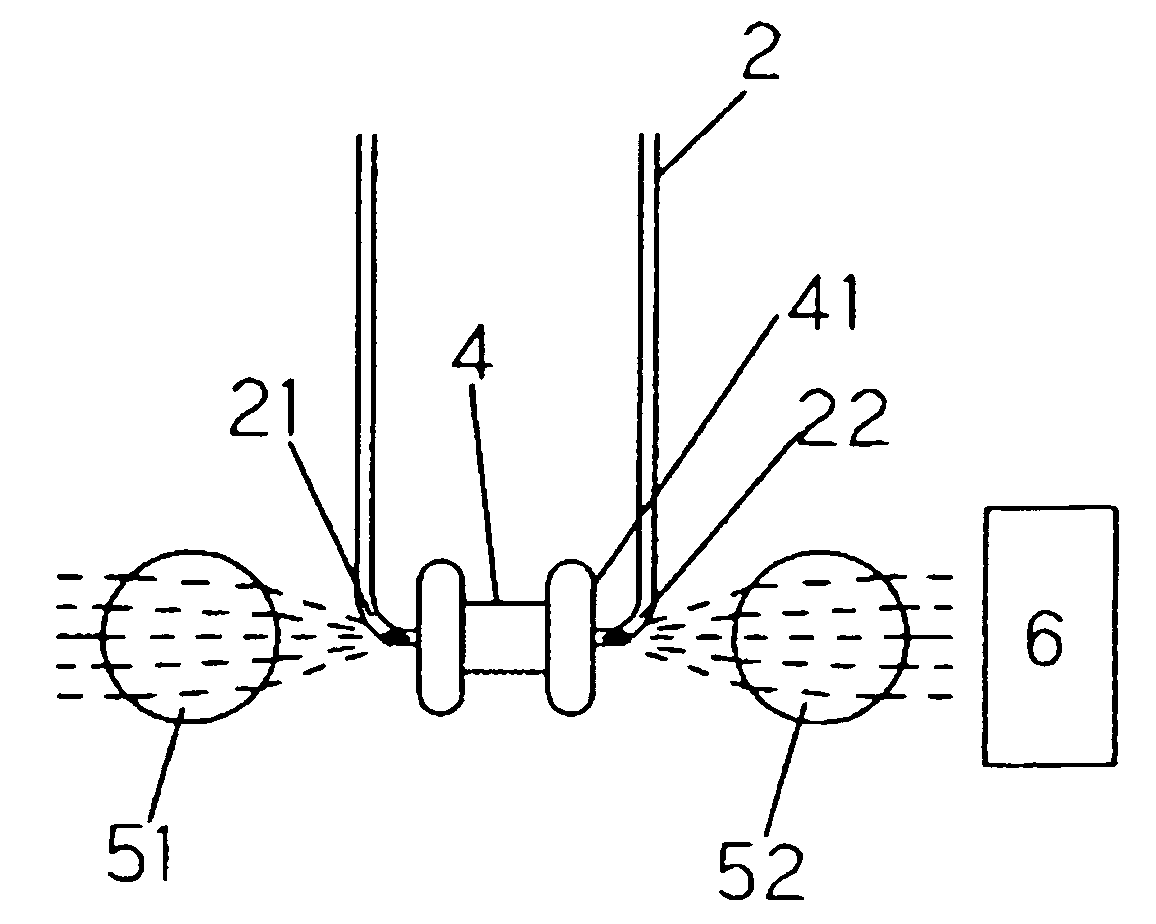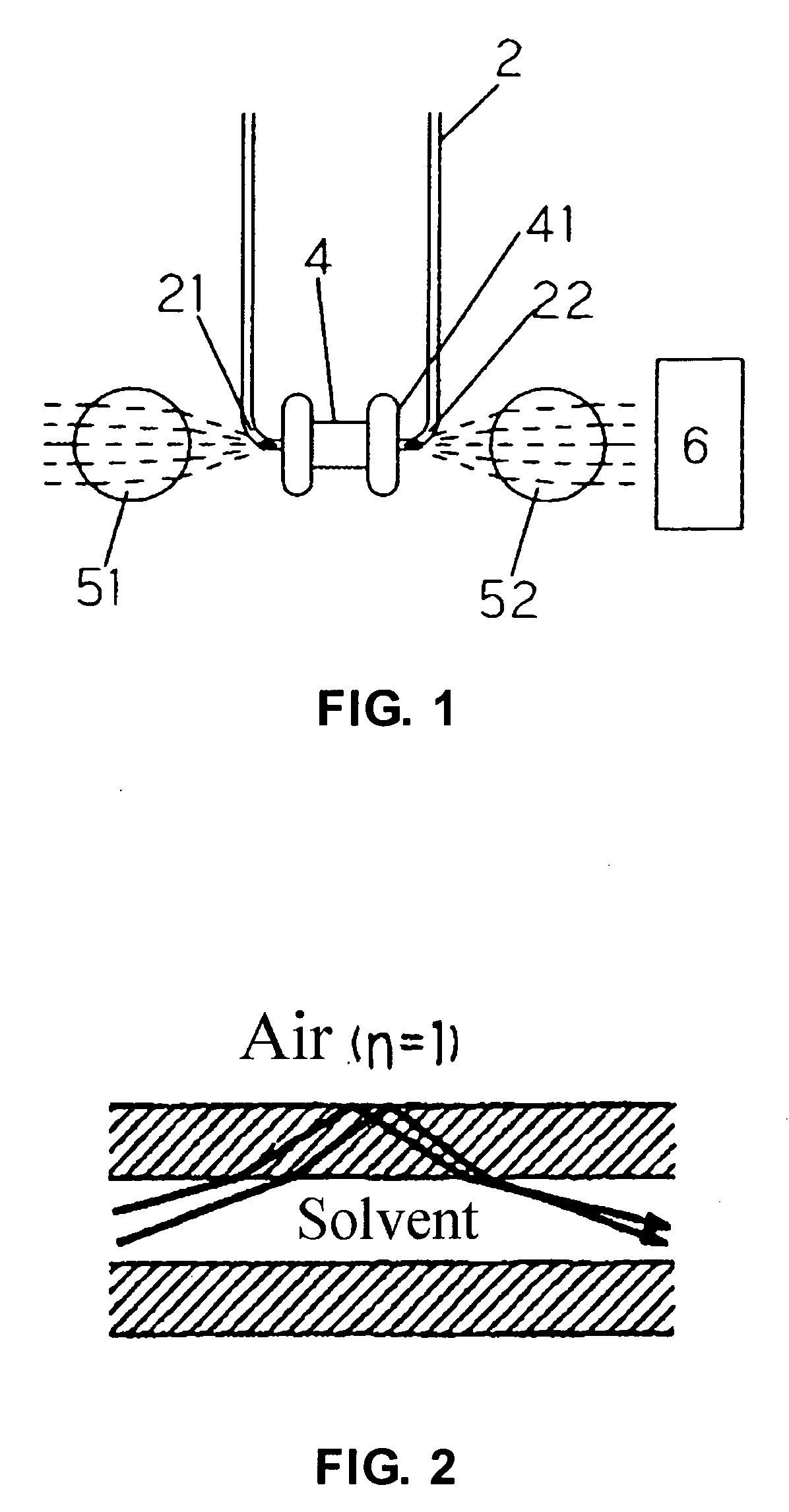Capillary tube flow cell
- Summary
- Abstract
- Description
- Claims
- Application Information
AI Technical Summary
Benefits of technology
Problems solved by technology
Method used
Image
Examples
example 1
[0097] As the present invention the structure shown in FIG. 1 was used and as a prior art the structure shown in FIG. 14 was used as an optical system which causes light to become incident in a direction orthogonal to the capillary tube flow passage. A comparative experiment of absorbance was conducted under the following conditions.
Conditions
[0098] Wavelength: 254 nm
[0099] Mobile phase: MeCN / H2O=65:35
[0100] Flow rate: 5 μl / min
[0101] Standard sample for evaluation: Sample solution containing acetophenone, benzene, toluene and naphthalene in (MeCN / H2O=65:35)
[0102] Column: Inertsil® ODS-3 (0.3 mm i.d. ×15 cm)
[0103] Column temperature: Room temperature (23° C.)
[0104] As a result, the chromatogram shown in FIG. 15 was obtained.
[0105] The difference in absorbance is obvious, and the present invention exhibited higher sensitivity and peak height.
example 2
[0106] The structure of the present invention shown in FIG. 1 was used and the structure shown in FIG. 1 from which the ring 41 was removed was used. A response experiment of an absorbance detector was conducted under the following conditions.
Conditions
[0107] Response of detector: 0.1 sec and more
[0108] Wavelength: 254 nm
[0109] Mobile phase: MeCN / H2O=65:35
[0110] Flow rate: 5 μl / min
[0111] Column temperature: Room temperature (23° C.)
[0112] As a result, the chromatogram shown in FIG. 16 was obtained.
[0113] The difference in the base line noise is obvious, and in the present invention the noise is kept in a low level and stability is good.
[0114] The capillary tube flow cell of the present invention is useful in analyses at very low flow rates. This capillary tube flow cell is particularly useful in a flow cell in which a capillary tube is used, because any user can perform replacement of capillary tubes easily and in a short time without requiring any adjustment when this rep...
PUM
 Login to View More
Login to View More Abstract
Description
Claims
Application Information
 Login to View More
Login to View More - R&D
- Intellectual Property
- Life Sciences
- Materials
- Tech Scout
- Unparalleled Data Quality
- Higher Quality Content
- 60% Fewer Hallucinations
Browse by: Latest US Patents, China's latest patents, Technical Efficacy Thesaurus, Application Domain, Technology Topic, Popular Technical Reports.
© 2025 PatSnap. All rights reserved.Legal|Privacy policy|Modern Slavery Act Transparency Statement|Sitemap|About US| Contact US: help@patsnap.com



